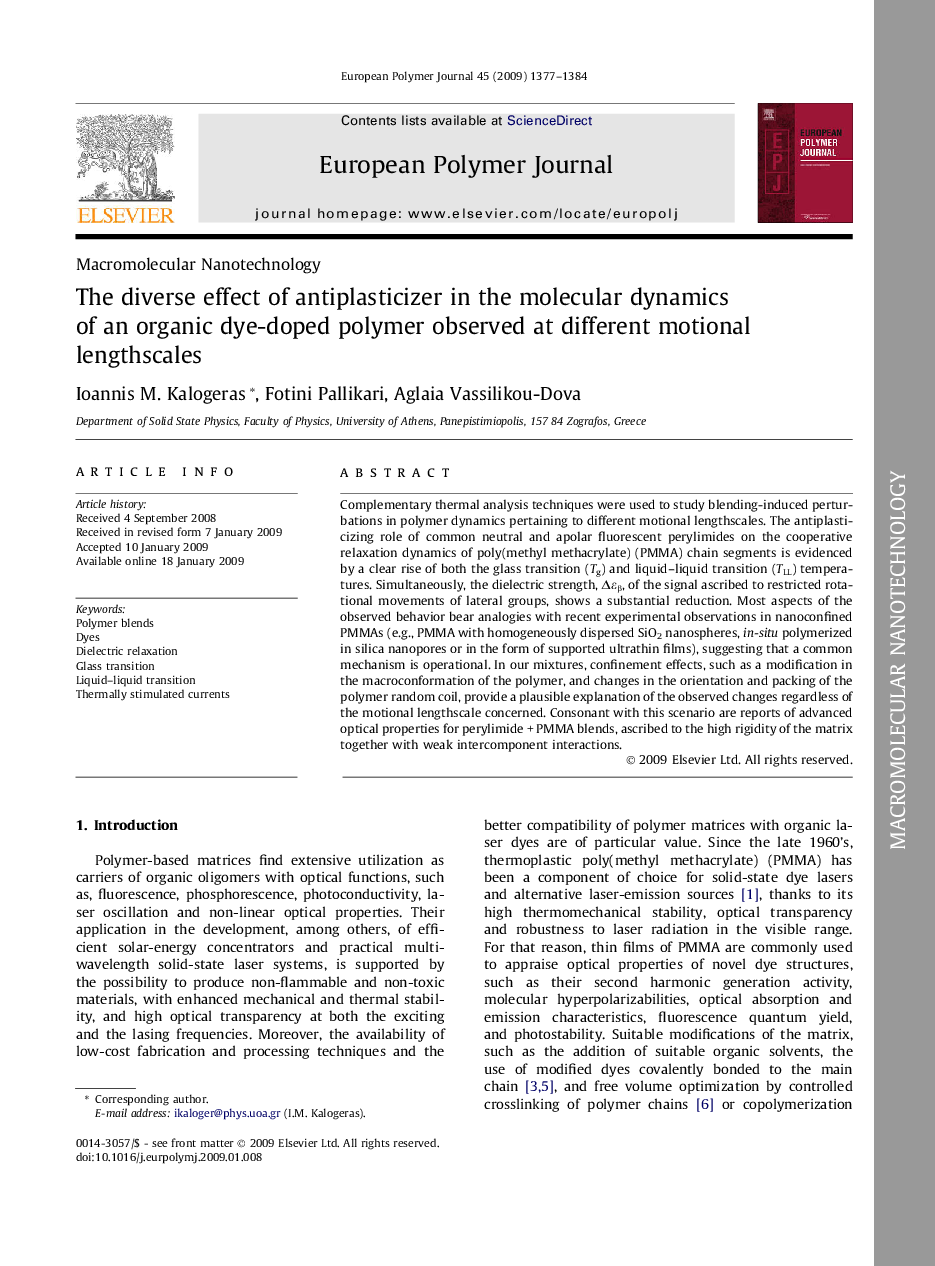| Article ID | Journal | Published Year | Pages | File Type |
|---|---|---|---|---|
| 1400812 | European Polymer Journal | 2009 | 8 Pages |
Complementary thermal analysis techniques were used to study blending-induced perturbations in polymer dynamics pertaining to different motional lengthscales. The antiplasticizing role of common neutral and apolar fluorescent perylimides on the cooperative relaxation dynamics of poly(methyl methacrylate) (PMMA) chain segments is evidenced by a clear rise of both the glass transition (Tg) and liquid–liquid transition (TLL) temperatures. Simultaneously, the dielectric strength, Δεβ, of the signal ascribed to restricted rotational movements of lateral groups, shows a substantial reduction. Most aspects of the observed behavior bear analogies with recent experimental observations in nanoconfined PMMAs (e.g., PMMA with homogeneously dispersed SiO2 nanospheres, in-situ polymerized in silica nanopores or in the form of supported ultrathin films), suggesting that a common mechanism is operational. In our mixtures, confinement effects, such as a modification in the macroconformation of the polymer, and changes in the orientation and packing of the polymer random coil, provide a plausible explanation of the observed changes regardless of the motional lengthscale concerned. Consonant with this scenario are reports of advanced optical properties for perylimide + PMMA blends, ascribed to the high rigidity of the matrix together with weak intercomponent interactions.
